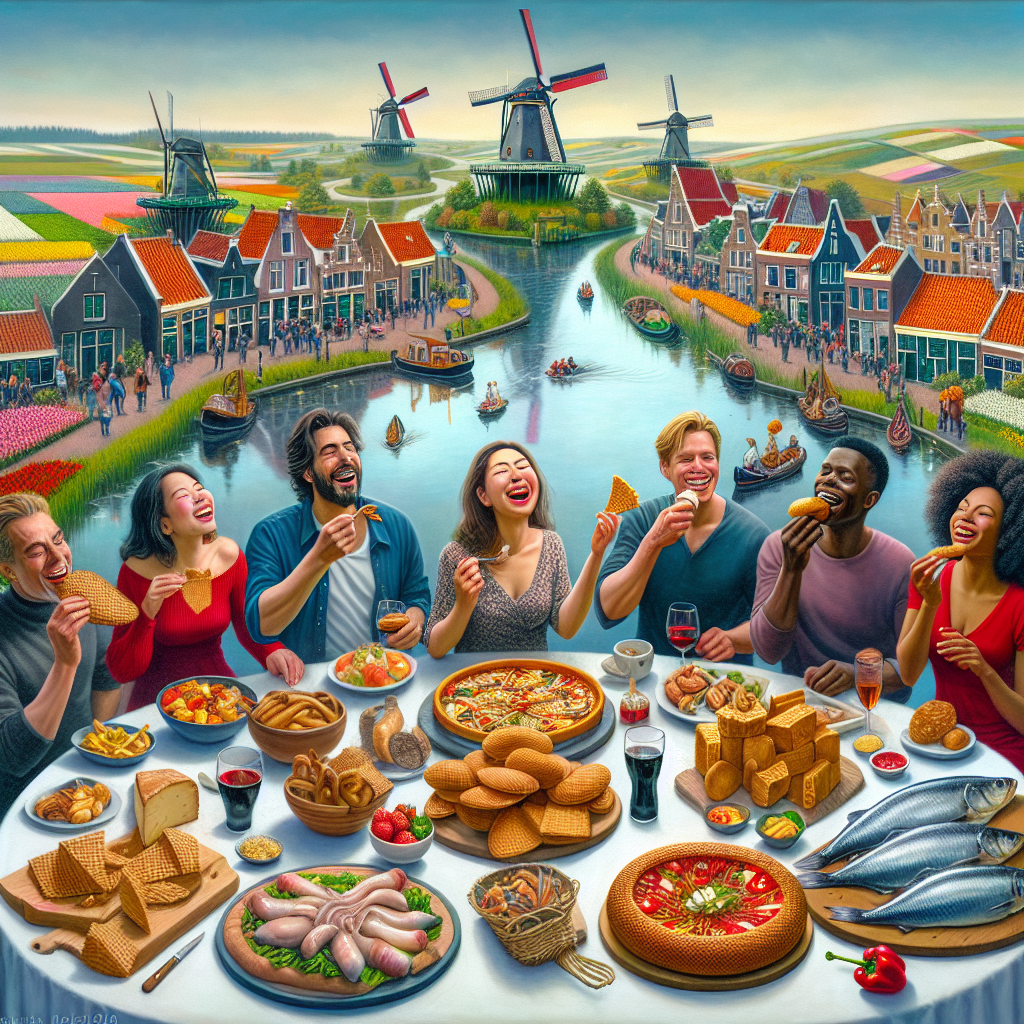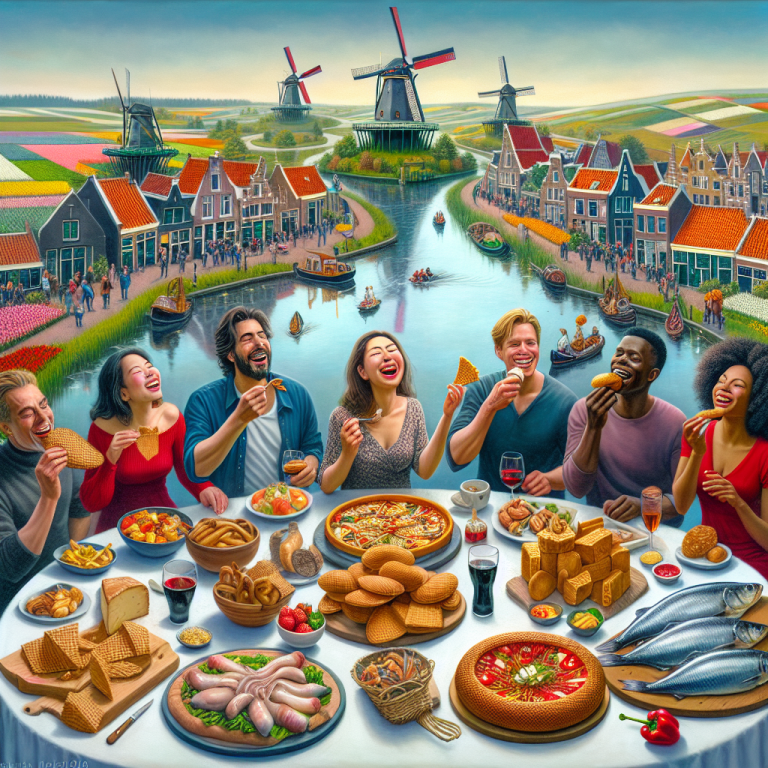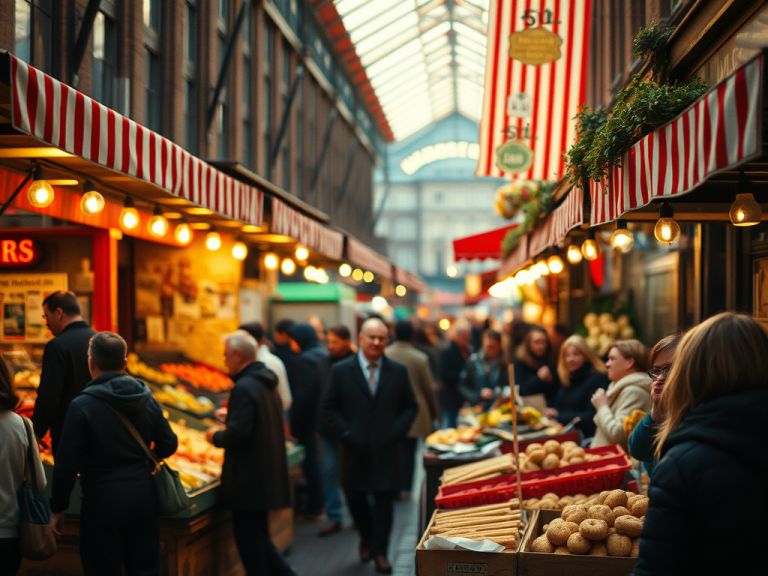Exploring Holland’s Seafood Delights: Beyond Herring
### Exploring Holland’s Seafood Delights: Beyond Herring
“Did you know that the Netherlands exports over 650 million euros worth of seafood annually?” This staggering statistic highlights the global appetite for Dutch seafood, yet many people only associate Holland with herring. As a seasoned SEO blog writer, I invite you to join me on a culinary journey through the Netherlands, where we will explore the rich tapestry of seafood offerings that extend far beyond the humble herring. Together, we’ll delve into the historical significance, modern-day industries, and the cultural impact of Holland’s seafood delights.
#### The Historical Significance of Dutch Seafood
The Netherlands’ relationship with the sea has always been profound. From the early days of fishing villages to the bustling ports of today, seafood has played a crucial role in shaping the Dutch economy and culture. But how did this maritime nation come to be synonymous with seafood?
#### A Maritime Legacy
The Dutch have been fishing for centuries, with records dating back to the Middle Ages. The North Sea, teeming with marine life, has provided a bountiful harvest for generations. The Dutch Golden Age in the 17th century saw the rise of the herring trade, which became a cornerstone of the nation’s economy. However, the story doesn’t end there.
#### Beyond Herring: A Diverse Seafood Palette
While herring holds a special place in Dutch hearts, the country’s seafood offerings are as diverse as they are delicious. Let’s explore some of the other treasures that the North Sea has to offer:
– Mussels: A staple in Dutch cuisine, mussels are often enjoyed steamed with a side of fries.
– Oysters: The Zeeland region is renowned for its oysters, which are celebrated for their unique flavor.
– Eel: Smoked eel, or “gerookte paling,” is a delicacy often served on toast.
– Shrimp: The small, flavorful shrimp from the North Sea are a popular ingredient in many Dutch dishes.
#### The Modern-Day Seafood Industry
Today, the Dutch seafood industry is a thriving sector that contributes significantly to the national economy. The industry is characterized by innovation, sustainability, and a commitment to quality. But which industries are most affected by this seafood bounty?
#### Fishing and Aquaculture
The fishing industry remains a vital part of the Dutch economy. With a focus on sustainable practices, Dutch fisheries are at the forefront of responsible seafood production. The aquaculture sector is also growing, with an emphasis on environmentally friendly methods.
#### Export and Trade
The Netherlands is one of the world’s largest exporters of seafood. The country’s strategic location and advanced logistics infrastructure make it a hub for seafood trade. Dutch seafood is exported to countries around the globe, with a reputation for quality and sustainability.
#### Culinary Tourism
The rich seafood culture of the Netherlands has also given rise to a burgeoning culinary tourism industry. Visitors flock to the country to experience its seafood delights, from traditional herring stands to Michelin-starred seafood restaurants.
#### Cultural Impact and Culinary Traditions
Seafood is deeply embedded in Dutch culture, influencing everything from traditional recipes to modern culinary innovations. Let’s take a closer look at how seafood has shaped Dutch culinary traditions.
#### Traditional Dutch Seafood Dishes
Dutch cuisine is known for its simplicity and reliance on fresh, local ingredients. Seafood is no exception, with many traditional dishes showcasing the natural flavors of the sea.
– Kibbeling: Deep-fried chunks of white fish, often served with a tangy garlic sauce.
– Haringhapje: A bite-sized herring snack, typically enjoyed with onions and pickles.
– Zeeland Mussels: Cooked with white wine, garlic, and herbs, these mussels are a true taste of the sea.
#### Modern Innovations
While traditional dishes remain popular, Dutch chefs are also pushing the boundaries of seafood cuisine. From fusion dishes that blend international flavors to innovative cooking techniques, the Dutch seafood scene is constantly evolving.
#### The Importance of Sustainability
In today’s world, sustainability is more important than ever. The Dutch seafood industry is committed to sustainable practices, ensuring that future generations can continue to enjoy the bounty of the sea.
#### Sustainable Fishing Practices
Dutch fisheries are leaders in sustainable fishing, employing methods that minimize environmental impact and preserve fish stocks. This commitment to sustainability is reflected in the industry’s adherence to international standards and certifications.
#### Aquaculture and Innovation
The aquaculture sector is also embracing sustainability, with innovative techniques that reduce waste and improve efficiency. From recirculating aquaculture systems to integrated multi-trophic aquaculture, the Dutch are at the forefront of sustainable seafood production.
#### Conclusion: Embracing Holland’s Seafood Legacy
In a rapidly evolving culinary landscape, embracing the diverse seafood offerings of the Netherlands is no longer optional—it’s essential for success. From the historical significance of the herring trade to the modern innovations of sustainable aquaculture, Dutch seafood is a testament to the country’s rich maritime heritage.
As we continue to explore the world of Dutch seafood, I encourage you to dive deeper into this fascinating topic. Whether you’re a seasoned seafood lover or a curious newcomer, there’s always something new to discover in Holland’s seafood delights.
#### Call to Action
Are you ready to embark on your own seafood adventure? Visit the Netherlands and experience the flavors of the North Sea for yourself. From traditional herring stands to cutting-edge seafood restaurants, there’s something for everyone to enjoy. And remember, when it comes to seafood, the journey is just as important as the destination.




